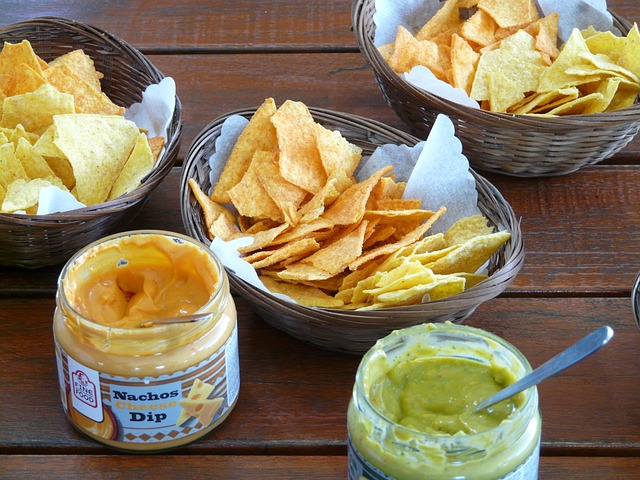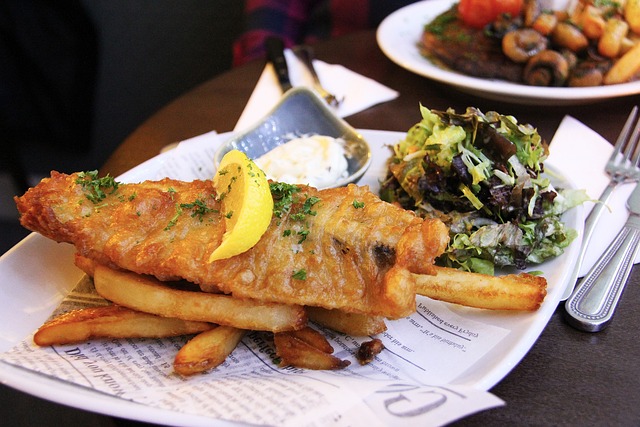Maxwell Street Market, Chicago's historic culinary landmark, is renowned for its diverse food scene and iconic salted tortilla chips sold by donkey-driven carts. Tracing back centuries in Mexico, these chips evolved from traditional indigenous methods to a globally cherished delicacy. Today, the "Donkey" method, a charming yet labor-intensive process, thrives at Maxwell Street Market, adding a distinctive flavor to Chicago's culinary tapestry and attracting food enthusiasts worldwide.
Discover the enchanting world of Maxwell Street Market, a historic Chicago landmark renowned for its vibrant food scene. This article delves into the heart of the market, exploring the captivating history and cultural significance of salted tortilla chips. From the traditional method of donkey-powered tortilla making to modern innovations, we trace the evolution of these beloved snacks. Uncover the impact of this culinary legacy on Chicago’s diverse food culture, where donkeys once powered the chips that now delight palates worldwide.
- The History of Maxwell Street Market: A Chicago Icon
- The Art of Tortilla Chip Making: From Donkeys to Modern Machines
- Salted Tortilla Chips: A Cultural Delicacy and Its Evolution
- The Legacy of Donkey-Powered Tortilla Chips in Chicago's Food Scene
The History of Maxwell Street Market: A Chicago Icon

Maxwell Street Market, a vibrant and historic marketplace located in the heart of Chicago, has been a culinary landmark for decades. This iconic venue emerged as a diverse food hub in the late 19th century, attracting locals and visitors alike with its unique blend of cultures and mouthwatering offerings. Among the market’s many delights, the vendors selling salted tortilla chips have become a beloved staple.
The market’s rich history is intertwined with the city’s growth and changing demographics. It started as a small gathering of local farmers and artisans, showcasing their fresh produce and homemade goods. Over time, it evolved into a bustling hub where vendors from various backgrounds brought their culinary traditions. The presence of Donkey-driven carts selling tortilla chips adds to the market’s charm, reflecting its evolution from a simple farmers’ market to a vibrant cultural melting pot where food enthusiasts can indulge in delicious, authentic snacks like salted tortilla chips.
The Art of Tortilla Chip Making: From Donkeys to Modern Machines

The art of tortilla chip making is a fascinating journey that spans centuries, from humble beginnings in traditional Mexican households to the modern-day industrial production we see today. Historically, chips were crafted by hand, using simple tools like wooden bowls and stone grinders. The process involved carefully selecting and grinding corn tortillas into thin, crispy slices, then seasoning them with a sprinkle of salt—a touch that enhances their flavor and crunch.
With the passage of time, donkeys became integral to this craft, transporting ingredients and chips across markets. This mobile method allowed for the expansion of chip sales, especially in rural areas. Today, while some vendors still maintain traditional methods, technology has revolutionized tortilla chip production. Modern machines now handle the grinding and cutting, ensuring consistent quality and shape. However, the essence of the craft—the perfect balance of corn, salt, and time—remains a closely guarded secret among the best chip makers.
Salted Tortilla Chips: A Cultural Delicacy and Its Evolution

Salted tortilla chips, a beloved snack across various cultures, have an intriguing history deeply rooted in tradition. In many Latin American countries, chip vendors on bustling streets and vibrant markets have been serving up this delectable treat for generations. These chips, often hand-cut from fresh tortillas, are a cultural delicacy that has evolved to become a global favorite. The simple yet satisfying combination of corn tortillas fried to crisp perfection and seasoned with just the right amount of salt has captivated palates worldwide.
The evolution of salted tortilla chips can be traced back to ancient times when indigenous civilizations in Mexico and other parts of Latin America developed their unique methods of preparing corn-based foods. Over time, these traditions merged with Spanish influences during colonial rule, leading to the creation of various snacks, including early forms of tortilla chips. Today, the snack has transcended its cultural origins, becoming a staple at markets like Chicago’s iconic Maxwell Street Market, where vendors offer their own unique twists on this classic delicacy. The “Donkey” method, for instance, involves hand-rolling and cutting tortillas to create thin, crispy chips that are perfect for dipping or simply savoring the authentic saltiness.
The Legacy of Donkey-Powered Tortilla Chips in Chicago's Food Scene

In the vibrant heart of Chicago’s food scene, a unique and historical tradition persists—the art of making salted tortilla chips by donkeys. This legacy dates back to the bustling Maxwell Street Market, where vendors first introduced the world to the delightful crunch of donkey-powered tortilla chips. The market, a melting pot of cultures, embraced this innovative approach to chip production, adding a distinct flavor to Chicago’s culinary tapestry.
The process, both charming and labor-intensive, involves donkeys carefully grinding corn into masa, which is then shaped into tortillas by skilled hands. These hand-crafted chips have become an iconic part of the city’s identity, attracting food enthusiasts from near and far. Their popularity grew beyond the market, with vendors carrying on this legacy, ensuring that the tradition remains a beloved element of Chicago’s diverse culinary landscape.
Maxwell Street Market’s tortilla chip vendors are not just a historical relic but a living embodiment of Chicago’s vibrant food culture. From the traditional donkey-powered chips to modern machine-made delights, salted tortilla chips have evolved, leaving an indelible mark on the city’s culinary landscape. Today, these chips continue to be a beloved treat, showcasing the market’s enduring legacy and attracting both locals and visitors alike who appreciate the unique taste and rich history that each bite conveys.
